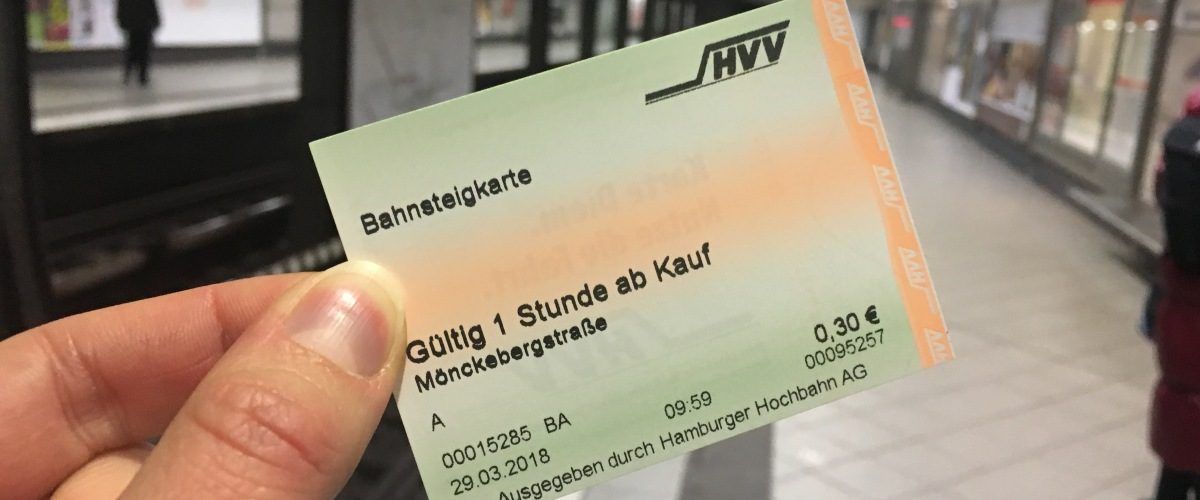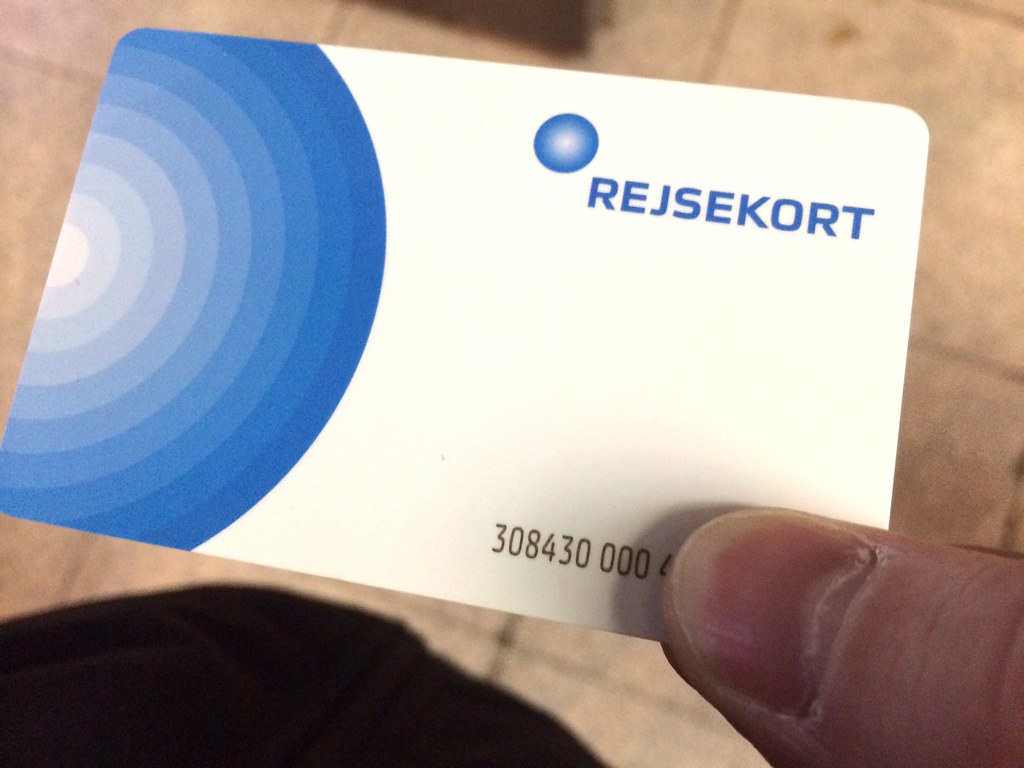I am completely spoiled by Asian transit. In Korea, my transit pass is linked to my bank card and so I just tap to get on any bus/subway/train in any city in the whole country. Tourists can buy a transit card from any convenience store that will work the same way, and also let you buy things at most convenience stores like pre-paid debit cards. I kept my transit card from Japan and used it again 3 years later with no problems. Again, they work on all the transit country-wide. I knew that visiting 8 countries in Europe would mean I’d have to navigate multiple public transit systems, but I had no idea how complex they would actually be.
This post is part rant, and part hopefully useful information for future travelers who encounter the same obstacles I did.
Paris, France:
Paris has a huge subway system, and tickets are priced by zone. It’s a good idea to look at the map and decide what zones you actually need before you buy. Buying tickets one trip at a time is the most expensive way. You can also buy a ticket book for a slight discount, which is what I did my first visit that only lasted 2 days. This summer, I was in Paris for 6 days, and wanted a better option, and one that would include buses, not only the metro.
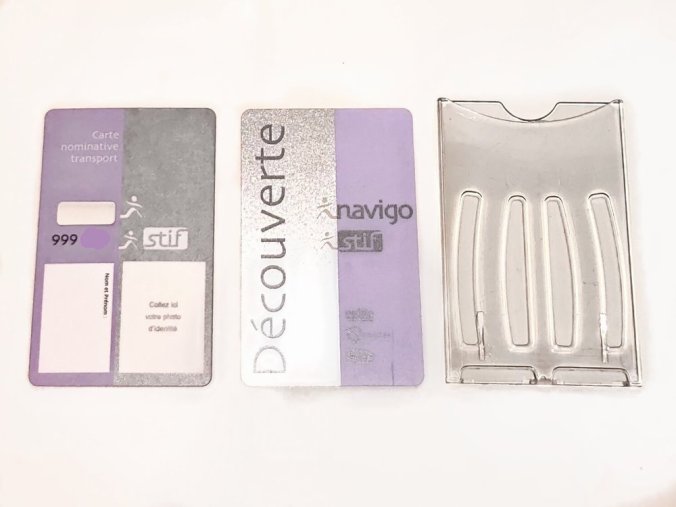
In the end, I bought a week long transit pass for cheaper than the 5 day tourist pass. When I asked about it the teller told me there’s no benefit to the tourist pass, that it’s basically there to bilk tourists, and I should stick to the cheaper option. Most cities have some version of the tourist card which includes “unlimited transit” and a few free attractions or discounts, however every single one I checked into was not worth it. In order to actually save money, a person would have to be running around like crazy and do 4+ activities a day!
You can see there’s a spot for a photo there, so it’s a good idea to have one ready when you buy your card. The lady who was working when I bought mine said I could add the photo later, but advised me to carry my receipt with me in case the metro authority asked to see my card and to prove it was not stolen. No need to get a fancy passport photo made, however, you can make a photocopy of your passport or other ID and use that.
Belgium:
In Brussels I got a Mobib Card with ten trips which is cheaper than buying your each trip one at a time. I was able to buy it easily in the subway station nearest to my arrival spot. The tickets are per trip, regardless of distance, and that if you have to go above ground and pass back out of the ticket scanning devices, or use a tram, there’s no transfers. Most of the Metro stations have a way you can connect underground, but be sure you get out on the correct side of the train car, since in some cases one platform leads OUT and the other leads to connecting tracks, while at other stops, it’s all the same.
It is also worth noting that the doors on the subway cars have to be manually activated. You have to tug the handle or it doesn’t open. I was a little panicked the first time thinking I couldn’t get on, but then I saw someone else open a door and followed suit. When in doubt, watch the locals.
The only downside is that the Mobib Card is exclusively for Brussels, and I needed to figure out transit again and again when I went out to nearby cities like Ghent and Antwerp.
In Ghent I could not find the tram for a while I thought about just taking a taxi from the train station to my boat but I did eventually find it, then realized I had no idea how to use it and no way to look that information up online since the SIM I bought in Paris wasn’t working in Belgium.
I managed to get change from a convenience store and buy a tram ticket at a machine near the stop, but I couldn’t find instructions on how to use it. I got on the tram with my ticket but didn’t see any place to use it so I just sat down. Of course I was doing it wrong but no one challenged me or corrected me. I’m sure if I didn’t look like a middle aged white tourist it could have gone differently. Although I did see a lot of barrier hoping in France….
In retrospect, I think the paper tickets have RF chips in them that you tap just like a plastic transit card. *shrug, they got my money anyway.
At the Ghent train station returning to Brussels, I got confused because it looked like nothing was going back to the “Midi station” in Brussels. It turns out that there are just too many languages in Brussels. Midi is the name I had seen in Brussels, but Zuid is another name for the same thing!!!

Overall, I think the transit issues in Ghent would have been avoided if I’d had mobile data. I did wonder how people navigated these transit options before smart phones, but I also think the technology of the trans, trams and metros has upgraded from paying cash and paper tickets to having RF chips in tickets dispensed by a machine and read by another machine. It’s great automation until you don’t know how to use it.
In Antwerp I decided to walk. The places I wanted to see were all within 30 minutes walking of the main train station and I wasn’t in a hurry. As a result, I have no idea how the transit inside the city works. On my out, the trains were running late but the kind conductor lady helped me hop off and change to a faster train at one of the stops. The tickets are somewhat flexible as to which trains you use to get to your destination.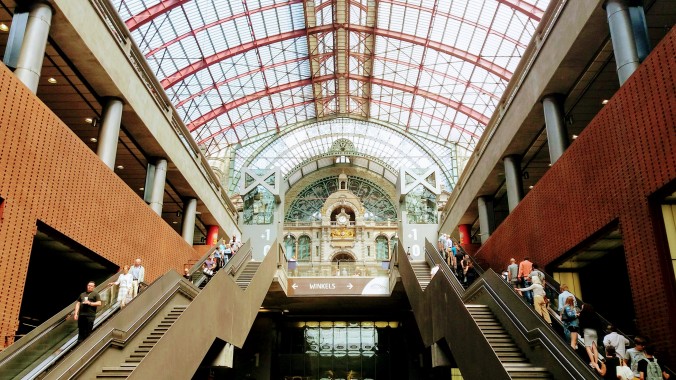
The Netherlands:
First, in Maastricht, the bus company that runs the bus between Lanaken and Maastricht is the Belgian company De Lijn, and I was able to buy a ticket at the Maastricht main station. The front of the buses had a space to insert the ticket and a date/time/remaining balance was printed on it each time. I think I ended up with about 0.60€ left unused on the ticket at the end of the week, but it was much easier than trying to buy a ticket every time.
I needed a different transit card (the OV Card) to get around the city of Maastricht, but at least I was able to use that transit pass to buy my passage into Aachen. Once I figured out the basic system it was not too bad, and the people in the Maastricht station were quite helpful in getting me the best prices when I was getting my cards set up on the first day.
The only complaint is that because Lanaken and Maastricht are smaller towns, the buses do not run often and there is no metro at all. This requires more careful planning to get to and from places, to get back to my room at night, etc. It also requires more walking since bus stops are fewer and farther between than in big cities.
Later, in Den Haag
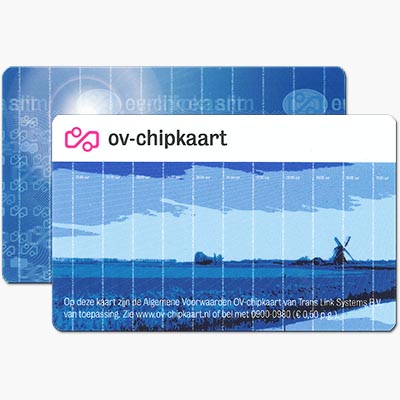
I need to preface this by saying Den Haag was the single WORST transit system I encountered in Europe. I was not a huge fan of Maastricht because the infrequent bus schedule, and that was not an issue in Den Haag, but what turned my brain completely inside out was the pay structure and it’s deep deep bias against foreigners. In the Netherlands, you can use the OV Card everywhere, so I was able to use the same card from Maastricht, which I thought would be a convenience…. ohhhhhh no.
When you ride in Den Haag, you have to tap in and out every time because the price of your trip is based on distance traveled; however, sometimes it double tapped or didn’t tap at all so I suddenly found myself completely out of credit on my OV card with no way to get more!
There are almost no recharging kiosks for OV in Den Haag either. I found one in the grocery store near my Airbnb, but it wouldn’t take my credit card and the cashier didn’t seem to care much. She eventually just stopped trying to even speak English which was only annoying because everyone else there had been like “of course we speak flawless English!” So, it seemed a little implausible she is the only one who doesn’t…
I tried to use the OV website to find kiosks in my area, but the website map wasn’t working… of course.
I tried to go out anyway, thinking I’d just buy a ticket on the bus but they don’t take cash and a 1hr ticket is 3.50€! I’d end up paying 7€ to go out and get back? I left the bus with sticker shock and stood around cursing the entire transit system that had robbed my card and left me with no way to top up and charged exorbitant fees to get to a top up place. Finally I decided to take the tram back to the train station and sort it out. Then the ticket box on the tram refused to take my debit card! How is a person supposed to pay for this????
I asked a ticket monitor about it because just at that moment I was feeling too honest to steal a ride. She directed me to the app where I bought a ticket then told me I didn’t need to ride all the way to the station I could just stop at Centrum and use the machine there. Great! Except when I got off to use it, it was out of order. I waited for the next tram and got on as my e-ticket was good for an hour, then realized it was going the wrong way, got off and waited again to go the other way. The only good news is they run every 10 minutes instead of 30 like in Maastricht.
I finally got to the train station and put more money on the card. I looked at my transactions history and realized that one point I was charged 4€ for a trip. If you tap in and don’t properly tap out, it’s 4€ no matter how far you go. That’s right, it costs more to mess up your transit card than to just buy the flat ticket. Gouge much?
My tram ride back from the station? .90€! It cost me 3.50€ to go using the app, and 0.90€ to go using the card. It’s worth using the OV Card, it’s just hard to use correctly. Eventually, I was able to go online to the OV website and submit a request for a refund of the over-charges and it was granted, although I still had to get to the train station kiosk to actually claim the credit.
I specifically say it’s biased against foreigners because most people who live there have their OV linked to their bank account directly, and can easily contest overcharges or incorrect charges at their leisure without worrying about not being able to pay for a trip. Meanwhile, visitors who front load the cards can still contest overcharges, but have no recourse for getting to a charging kiosk if a mistake has drained our account.
Returning from Amsterdam
The OV card isn’t evil in and of itself. I had very little issue using it in Maastricht and Amsterdam. It was nice to be able to move from city to city without having to invest in yet more transit passes (glares at Belgium and France).
However, the vaunted European train system turned out to be a massive disappointment. I know I’m kinda old, but I remember when the dream was “get a Eurail pass and back pack around Europe for your gap year”. My parents had good things to say about the trains. The trains are 2-3x the cost of a bus in most places there. I expected the trains to be GOOD. It was not true.
I hopped on my train back to Den Haag thinking I’d had a wonderful if over-budget day and then about halfway back the train just stopped.
There was a problem with some other train stuck on the tracks (I heard because of the heat) and we sat there for about 90 minutes. The main problem with this is that I only had a small bottle of water, enough for the anticipated one hour journey but not longer after a long day in extreme heat (it was averaging 35-37C that week), and several alcohol drinks (wine with the cheese tasting, Bols distillery tour, and beer with dinner!). I even thought about buying a larger bottle in the train station and thought “no I’m ok, it’s not far.” FML.
There was a toilet in the train but no potable water. I tried to distract myself with Netflix, but I was getting insanely thirsty. We finally moved backwards to Harlem and I was told to ride to Leiden and transfer there to another train. My ticket would cover all my transfers to get me back to Den Haag, but nothing would make up for the extra hours added to what should have been a short and direct trip. At least I got to watch a beautiful sunset from the unmoving train?

When we got to Harlem, my first priority was water and I even willing to buy some but by 10:30 at night, most places weren’t open (Europe closes at 8pm) and the one I went to wanted 2€ for a tiny bottle!!! I pulled up my reusable and asked about tap water. It’s safe to drink from the tap in Europe. The sales clerk looked at me like I had suggested eating his grandmother and said “it’s not free” with the most contempt I have ever heard in regards to being asked for water.
A Little Rant About Water
 Ok, a business pays fees to have water, but there is no way customers are going to drink a tenth of what you use operating a food stand. Washing a single load of dishes is more water than all your customers could drink if you gave them each a cup. Water is basically free in a drinking capacity, and even if you wanted to charge me for using your tap water, 20-30¢ would way more than cover my water bottle and not be actual extortion. In a record setting heat wave. While the whole country is having train delays.
Ok, a business pays fees to have water, but there is no way customers are going to drink a tenth of what you use operating a food stand. Washing a single load of dishes is more water than all your customers could drink if you gave them each a cup. Water is basically free in a drinking capacity, and even if you wanted to charge me for using your tap water, 20-30¢ would way more than cover my water bottle and not be actual extortion. In a record setting heat wave. While the whole country is having train delays.
I know I was raised in the US where the first thing a waitress gives you is water and it’s bottomless and always free, but I’ve traveled a lot and never encountered such water stinginess as exists in Europe. I’ve also lived in places where the tap water is not safe and never had trouble buying drinking water at very reasonable prices, and many businesses still give away clean drinking water and public water fountains are available in parks and public spaces.
I thought France was stingy with the water but at least you could get it if you asked and in France and Belgium I was able to find some public drinking water (the photo above is a public drinking fountain in Paris). The rest of the time I filled my bottle in bathroom sinks… the bathrooms are very clean because there are no free bathrooms.
I just don’t understand the water hoarding going on here. I don’t think it would be hard to install cheap water stations like the paid public toilets to let people refill their own bottles and reduce plastic waste. If you must make people pay for water then keep it affordable. Besides, free water in tourist areas makes people stay longer. In the end the EU is calling for clean drinking water to be a human right, but F.U. if you’re travelling in a heat wave and get stuck when the infrastructure breaks!
End Rant.
Hamburg, Germany:
I had been using Flix Bus to get between my main cities up to this point, and it’s about as advertised. It’s a cheap bus. There is usually a bathroom, and sometimes WiFi. It’s nothing to write home about, but it’s ok. Additionally, it’s often less than half the cost of the trains. When it came to getting in and out of Germany, however, the costs were suddenly inverted and the train became the cheaper option by half. Germany + trains? That has to be efficient and on time right? Oh, stereotypes, you fail me again. The trains are expensive, overcrowded and often late. Take a bus.
The train ride on DB Bahn from Den Haag was long. It took three trains and I always had to be aware of my stop because there are lots and no one will tell you where to get off. There is no WiFi on the trains in Germany. And outside the main cities I didn’t get good reception either. There was some air-con on the trains but only between stops, so it would get hot again while people got on and off. By the time I got to Hamburg 7.5 hours later I was soaked in sweat and tired.
The good news is HVV (the transit authority in Hamburg) is great! Although the website is total gibberish, I went to their office in the station as soon as my train arrived, and the kind woman behind the counter helped me figure out what zones the places I wanted to go were in and helped me to save money on the week long transit pass. It was a tremendous relief to have unlimited transit and not have to worry about tapping in and out and possibly running out of credit due to a computer error!
In fact, there’s no RF readers or tapping in and out at all. The HVV transit pass is just piece of paper in a plastic sleeve that you can show to the bus driver or ticket checker and it’s all good.
However! The one time I went outside my pass’s zone, I did have to buy a single use ticket. It was supposed to be cheaper this way… it turned out to be a royal pain. I still don’t know the correct way to buy a single use ticket across multiple zones. I thought I got the correct multi zone pass to head out to Blankenese, I got on the first leg ok, but the bus driver at Blankenese refused to let me on, saying I had purchased the ticket in the wrong zone. I don’t know if he was just being a jerk or what, because otherwise it seems I’d have to buy one ticket to get from downtown to Blankenese and then ANOTHER to get around Blankenese. I ended up walking to the beach.
On the way back from Blankenese, I decided to take the ferry, which was an excellent choice. It’s recommended to use the public transit ferry as a cheap tour of the Hamburg harbor and they’re not wrong. At 10.80€, it was certainly more expensive than using land transit, but much cheaper than a cruise up the Elbe with all the same wonderful views.
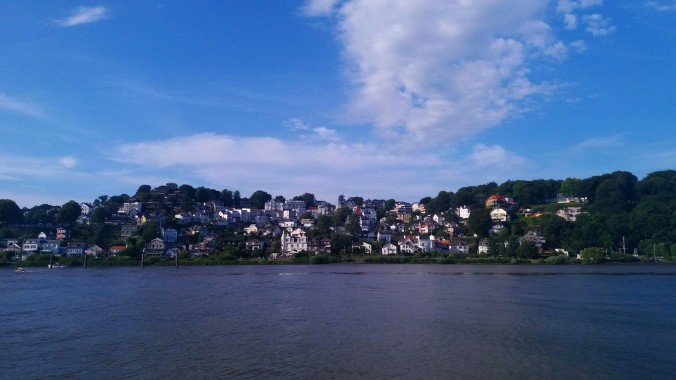
Leaving Germany, the last train
The original train I booked with DB Bahn was a single train from Hamburg to Copenhagen on Saturday, but the heat wave in Germany was KILLING ME, so I changed to a Friday ticket instead and left a day early. The new train route had two transfers, each giving me less than 10 minutes to change trains. A situation I would have thought could only be offered if the trains were reasonably on time. Silly me!
My first train was 10 minutes late in arriving, but that was ok because my second train was 15 minutes late departing, so I did at least get on it. However, so did EVERYONE ELSE. I’ve seen less crowded trains in China. Oh, and the platform wasn’t clearly marked so, even though I was standing under the sign for my train, my train actually pulled up at a totally different part of the platform and we only realized it when the hordes of people started running past us to get to it.
The first several cars were so full that I couldn’t even get in the door. I mean, seats all full, aisles all full, stairs all full, entryway all full, full. I finally found one car I could squeeze into and found myself standing on the stairs (with all my luggage) compressed by bodies. There was an option to buy a reserved seat on the website, but I thought it was just for if you wanted to be sure you and your group had seats together or if you wanted to be sure to get one of the ones with tables. I didn’t realize they oversold the trains by so much that it was the equivalent of the Beijing subway. If you find yourself forced to take a train in Europe, pay the extra 4$ to get a reserved seat or else be prepared to stand.
As the tiny stops went by, and people got on and off, I was shuffled off the stairs and into an actual compartment where a very kind man getting off at the next stop gave me his seat and I was able to rest at last. By about halfway, most of the standing people were gone or seated, but it was still ridiculous.
That train was, of course, also late to my second connection, and I missed my connecting train altogether. The conductor gave us instructions on where to find connecting trains to various destinations and I stepped out onto the platform to wait for the last train of the day. It was going to be about 20 minutes later than my first scheduled train, but I didn’t think that was too bad.
I met a young American lady, just graduated from college and off for her summer in Europe with her Eurail Pass and we got to chatting in the station. When we boarded the next train it seemed that too would be standing room only, and two bicycles blocked off 4 folding seats entirely. Luckily, as the train filled up, and started moving, a kind lady pointed out that there were two empty seats after all and we rushed over to grab them gratefully.
Copenhagen, Denmark:
The train took 90 minutes longer to arrive than the one I was supposed to be on, and instead of arriving in Copenhagen around 10pm, it was almost midnight. I expected the train to let us out into a train station where I could find shops, an ATM, and ticket machines for the public transit system. Instead, the train let us off basically on the street. I had no idea which building was likely to contain the train station/atm/ticket machine so I began to cast about for any ticket machine at all.
I found one at the bus stop but as far as I could tell, the only option I could do with a credit card was to buy the Rejsekort transit card. For this you must pay for the card (80kr), then pay a minimum of 100 danish krone as a balance. So it cost me about 24 euro to get a transit card. But it was midnight and I was exhausted so I just bought it and got on the bus. Being extra sure to tap out as I exited and see the fare, I was pleased to note that even the fairly long journey out to the diplomatic quarter was about 12 kr and figured I’d be able to use that 100kr for a while yet (foreshadowing!)
The Rejsekort transit card worked similarly to the Netherlands OV Card in that each trip required a tap in and out and money was deducted from the card. However! There are two types of cards, registered and unregistered. Guess what? Of course since I bought mine from a machine at midnight it was unregistered which meant I had to maintain a minimum balance of 70kr in order to USE the card. Please remember that the trip between our Airbnb and the main train terminal is only 12kr, so that’s a little more than 5 trips in and out of town that I have to load up and NEVER USE. I was not amused.
Gothenburg, Sweden:
The local transit company here is Västtrafik. The transit in Gothenburg is good, but Google Maps has the wrong names for almost everything, so it says “get on the 10 going to abc-Swedish name” but none of the bus stops match that name on the sign. You can’t just guess by which side of the street it’s on because they use bays to remove the transit from the flow of traffic (very cool idea) so the stops are all together on an island in the middle of the roads. They have stop letters, so Google could just say take the 10 from Bay A but no. I blame Google for this failure, not the city of Gothenburg.
Most of my time in Sweden was in a rental car, but for the time I spent in Gothenburg before getting my car, I was able to use the public transit easily enough by purchasing a three day pass which included unlimited use of buses, trams, and ferries. This is especially worthwhile since the archipelago near Gothenburg are PHENOMENAL.
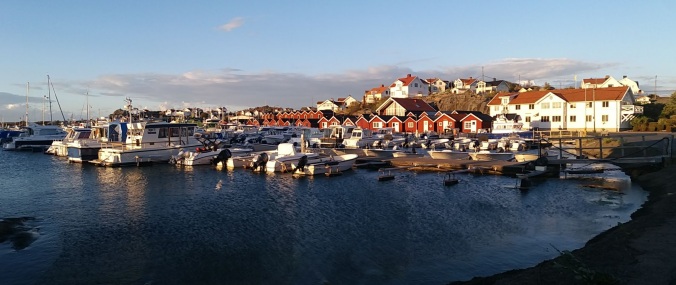
Driving in Sweden was great. The roads are in good condition and the signs are very easy to follow. It is likely going to rank in my top 5 all time road trips. 10/10 would do again.
Even with the car, when I was in Stockholm, I opted to leave the rental at the hotel parking lot and take the bus around the city. In a surprising turn of absolute convenience, I downloaded the transit app on my phone and used that to buy my tickets for the day. I’m sure there are longer term options, but I was happy to just get the single use tickets since I was only using it for two trips and it was drastically cheaper than paying for parking.
Olso and Nesodden, Norway:
I was only in Norway because I was flying out of Oslo. My Airbnb was on Nesodden, one of the fjords a ferry ride away from Oslo. A single trip transit ticket is only good for an hour, but would take more than that to reach my Airbnb from the bus station where I arrived. Do I really have to buy two tickets for this? Turns out… no.

I took the local bus to the ferry terminal, but the buses on the fjord considered anyone getting OFF a ferry to be transferring and did not require an additional ticket. Whew. The ferry tickets were only mildly confusing, and with minor investigative skills I was able to navigate the ticket kiosk at the ferry terminal.
Once the bus dropped me off at the stop closest to my Airbnb, I was truly worried however since it was very rural, with no signs of any ticket machines near the bus stop. I had no Norwegian cash on me and was not walking distance from anything. I tried to use the transit app for Oslo, but it refused to accept my Korean bank card OR my American credit card (which was a much bigger surprise). Unlike the ultra convenient Stockholm app, the Oslo app would only accept payment from a limited number of EU countries.
In the end, I just went to the bus stop when it was time to leave and explained my situation to the driver. Of course he had a solution, and I was able to get to the ferry terminal, then from the Oslo side of the ferry, I was able to walk to the nearest train station that would take me to the airport…. where I promptly bought the wrong ticket.
I’m still not sure I completely understand what happened. I went to a ticket kiosk and bought a ticket to the airport, then followed the signs and got on the train. There is no place to have the tickets checked on the way to getting on the train. Once I left the train at the airport, our tickets were checked on the way out. The ticket checker told me I had bought the wrong ticket, and that I’d bought the city public transit ticket, but gotten onto a private company express train (not clearly marked, and don’t check tickets on the way IN?). The money I’d spent went to the city transit authority (Ruter) and there was no way for the private train company to get it. I tried to offer to fix my mistake, but it seems there’s no way to fix it on the back end and she waved me on through exhorting me to pay more attention to the trains in future.
I would never have hopped on the wrong train intentionally, but it wouldn’t hurt if they had some kind of a barrier to scan tickets on the way in?
Moscow, Russia:
Ironically, as in counter to expectations, Moscow had the best running and least expensive public transit. I was only in Moscow for 20 hours, and I got a 24 hour unlimited pass for less than the cost of a single trip ticket in any European city. The ladies at the ticket counter spoke enough English for me to easily get the one I wanted.
I had a little trouble finding my first Metro station (I should have got a SIM card so my Map would work better) but once I realized what to look for in a Metro entrance, getting around Moscow was a breeze. The stations are so well labeled and the metro maps are clear (if you know how to read a metro map). Plus, Moscow is famous for it’s beautifully decorated stations. Even when I got lost because I read the stops wrong there were helpful people to turn me around and help me find my way.

I also used the airport express train here which was crowded, but reasonably priced and running on time with no surprises. I guess there are some things communism does well?
I have come to realize that I’m a novelist, not a blogger. I think other people would have made each country a separate blog post in order to spread out the words, and get more posts out there. At 5200+ words, I gave some serious thought into dividing this post up into bite size chunks… but tbh, I’m not that thrilled to be writing about transit, and I’m mainly including it because these were hard won lessons that I hope can spare at least one other human my trials and tribulations. I also think it helps sometimes to see that the adventure life is not always one of joy and excitement, and that we must also contend with learning basic life skills over and over in each new place we visit.



